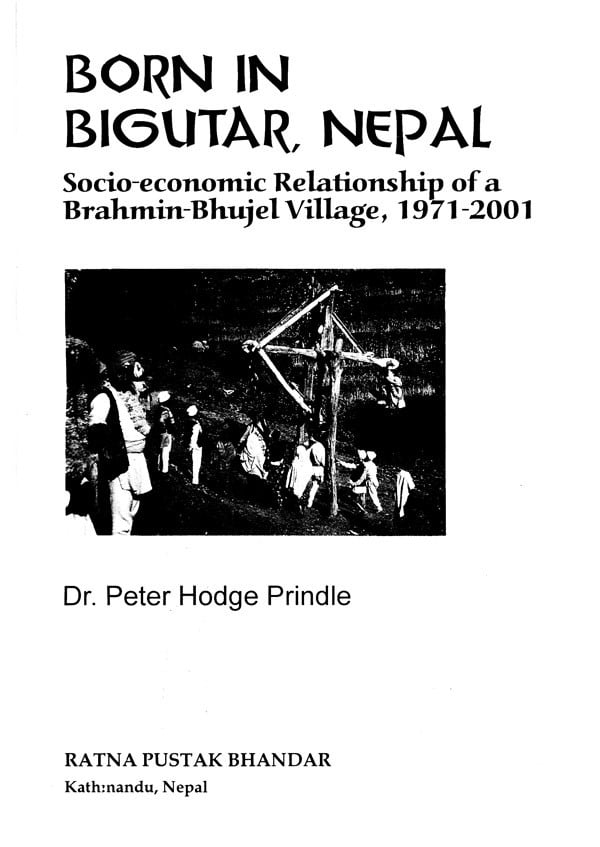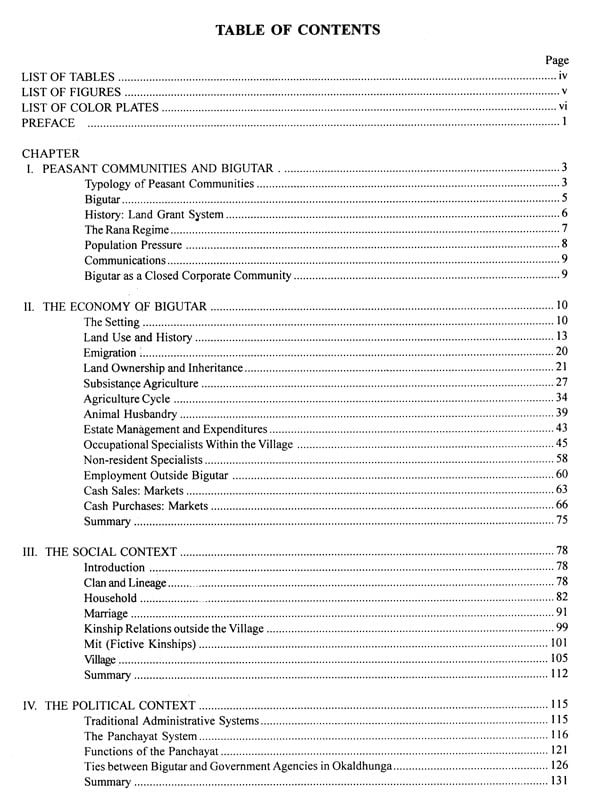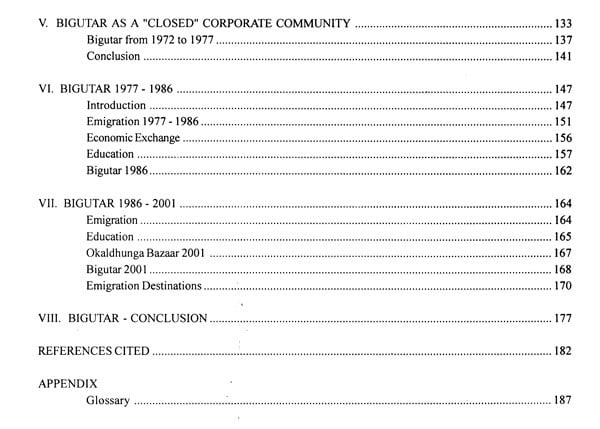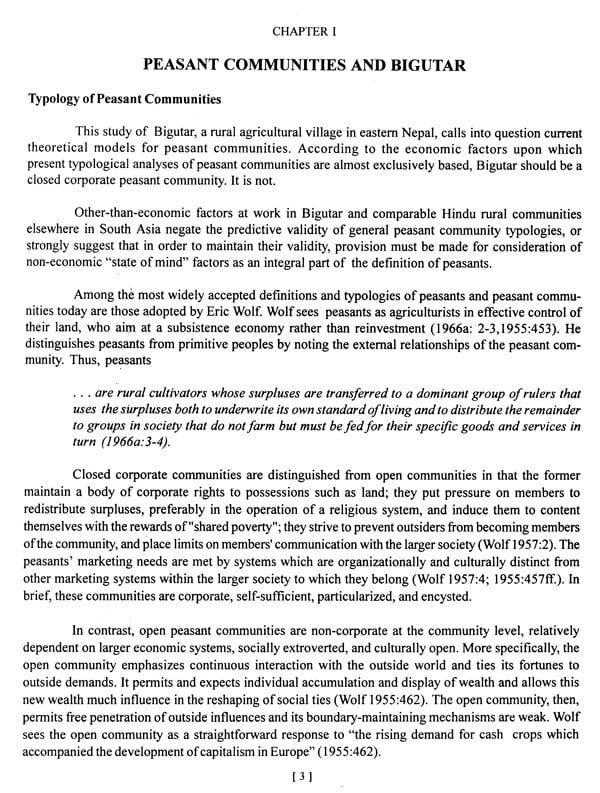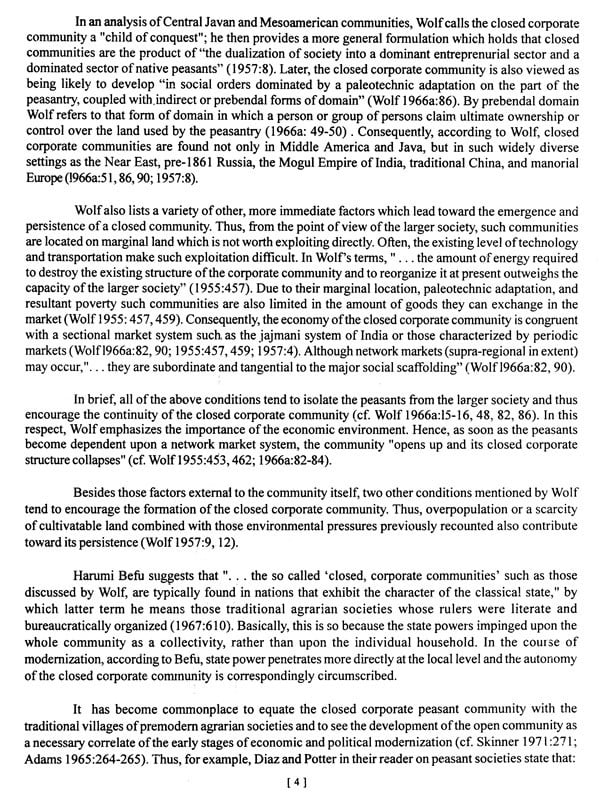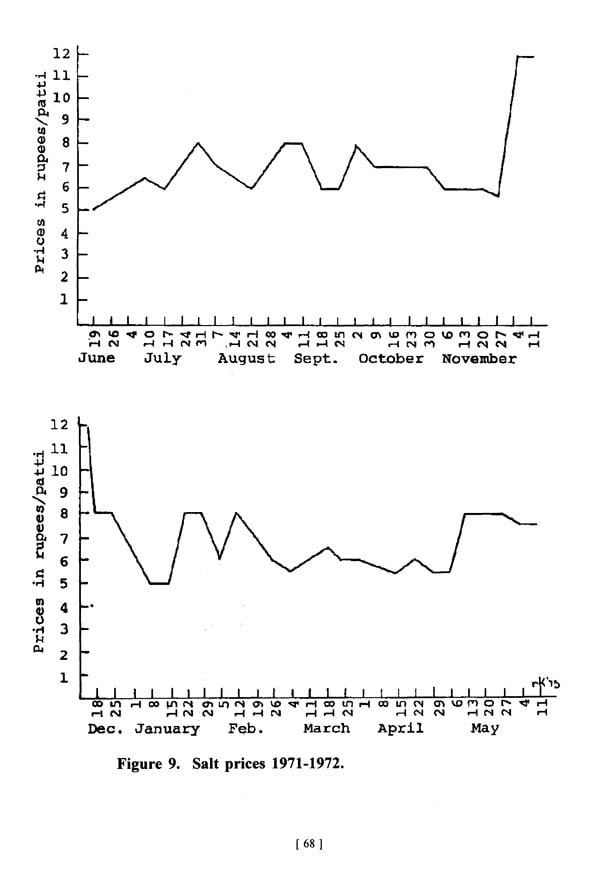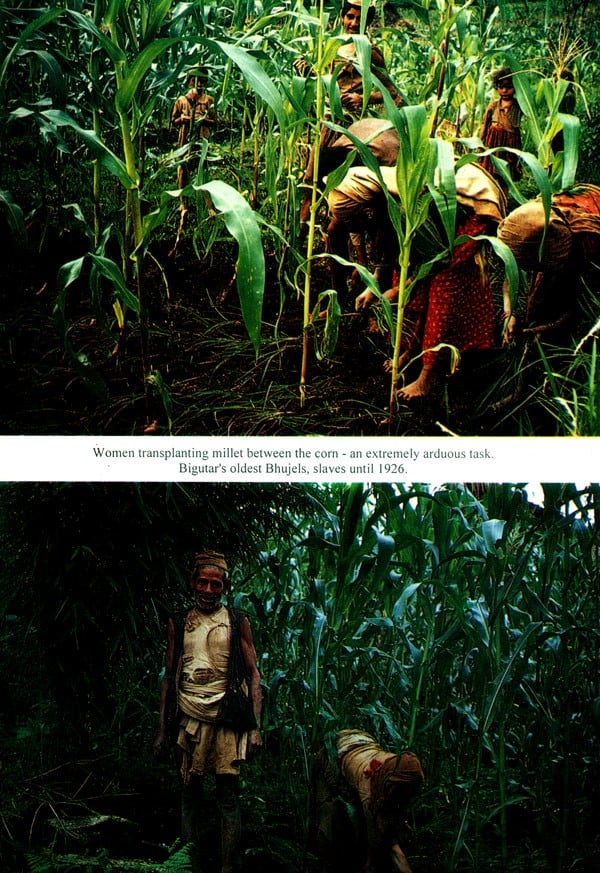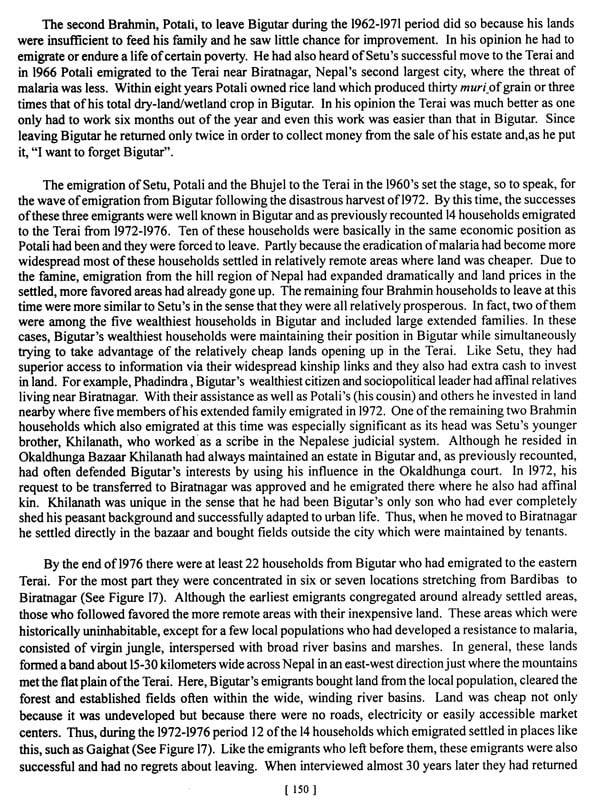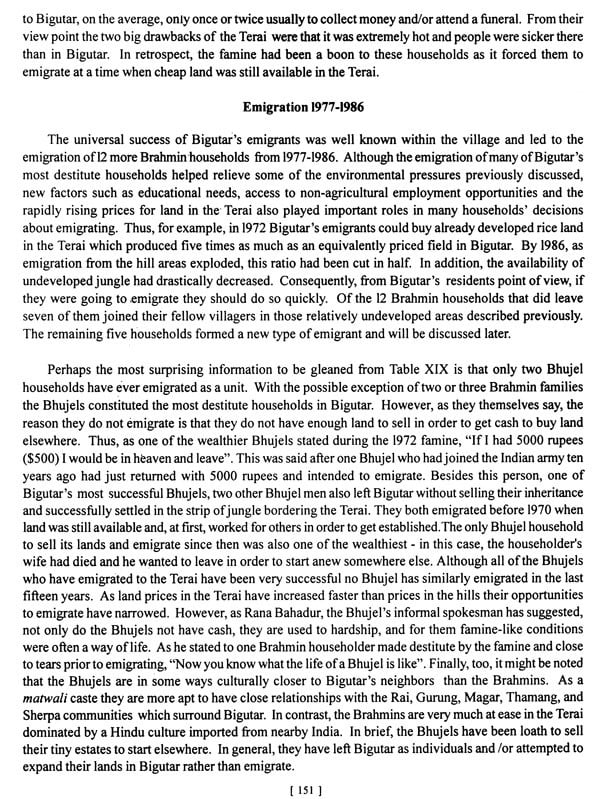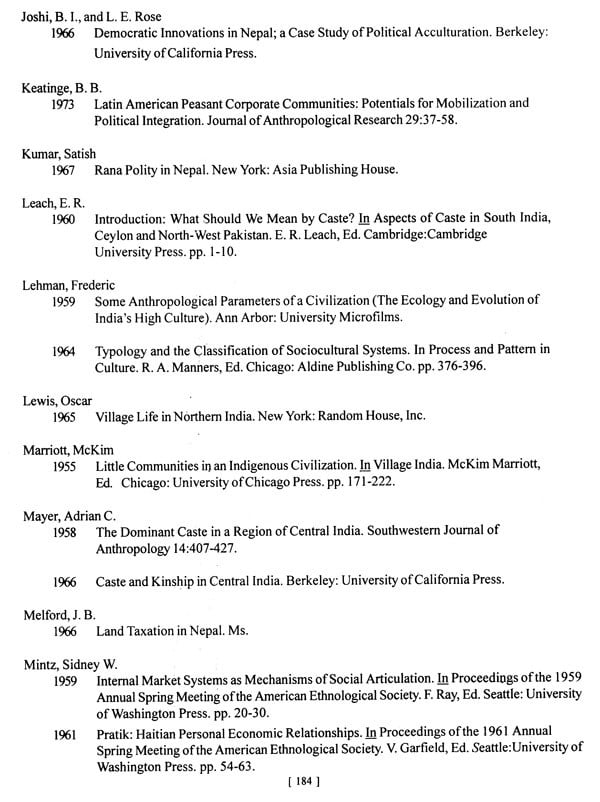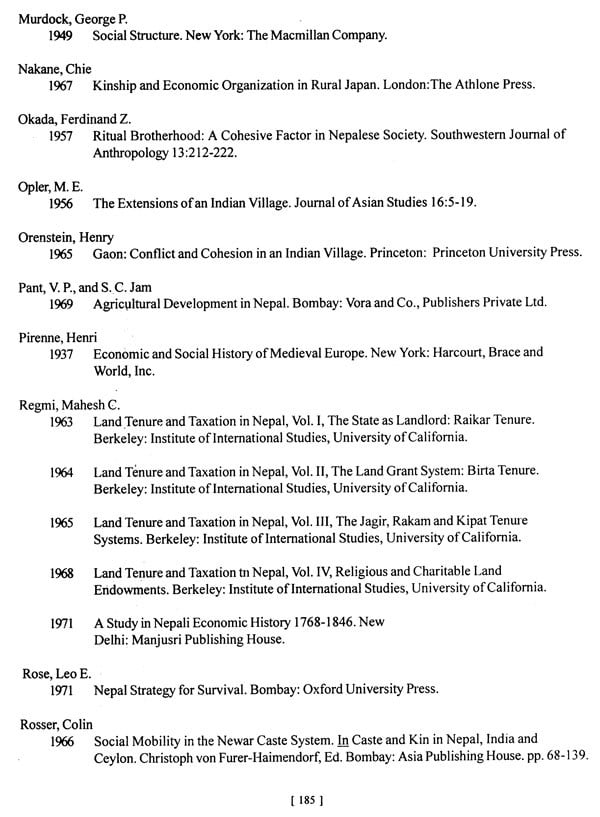
Born in Bigutar, Nepal-Socio-Economic Relationship of a Brahmin-Bhujel Village, 1971-2001
Book Specification
| Item Code: | UAS084 |
| Author: | Peter Hodge Prindle |
| Publisher: | Ratna Pustak Bhandar, Nepal |
| Language: | English |
| Edition: | 2002 |
| ISBN: | 9789993303267 |
| Pages: | 198 (Throughout Color Illustrations) |
| Cover: | PAPERBACK |
| Other Details | 9.50 X 7.00 inch |
| Weight | 430 gm |
Book Description
The fieldwork upon which the study is based was originally carried out in 1971-1972 in the Okhaldhunga District of casters Nepal. Reserch centered on two sites, Okhaldhunga Bazar (population 874) and Bigutar (population 346). As the investigation was primarily concerned with the social system of the agricultural village of Bigutar, a major portion of the fieldwork (May, 1971-June, 1972) was conducted there. In addition, another ten months (June, 1970-April, 1971) were spent in the district capital, Okhaldhunga Bazar. The latter served as the primary population and economic center for the inhabitants of Bigutar and, as the research was also concerned with the villagers' external relationships, an Investigation of both sites seemed necessary During fieldwork information was obtained primarily from observation and through informal interviews. Except during the first four months in Okaldhunga Bazar, interpreters were not used and much Information was gleaned from the villagers' day-to-day conversations. Information collected during the original period of reserch (1971-1972) as well as during a six-week visit in the fall of 1977 is presented in chapters one through five. This description and analysis, written between 1974 and 1978, has been retained in its original form, Information presented in chapters six through eight was collected during three additional visits, each of six weeks duration, in 1987, 2000 and 2001. Besides these periods of fieldwork, contact with the people of Bigutar was also maintained during the past 30 years through correspondence.
Many persons and institutions have contributed to the realization of this project. The Department of Anthropology at Washington State University and the National Science Foundation financed the original fieldwork. I am also grateful for the encouragement and support given to me by my wife, Tamac. It is to the people of Nepal, especially Bigutar, that I am most indebted. Without their interminable. patience, courtesy, good humor and friendship this undertaking would have been impossible. In particular, I would like to thank Harihar Dahal who steadfastly encouraged me to record the changes which had occurred in his natal village since 1972, a story he thought the present and future generations of Bigutar as well as others would appreciate. Finally, I am grateful for the editing assistance provided by my nephew, Joseph Kettle, whose interest in Nepal may help carry this study on indefinitely.
**Contents and Sample Pages**
